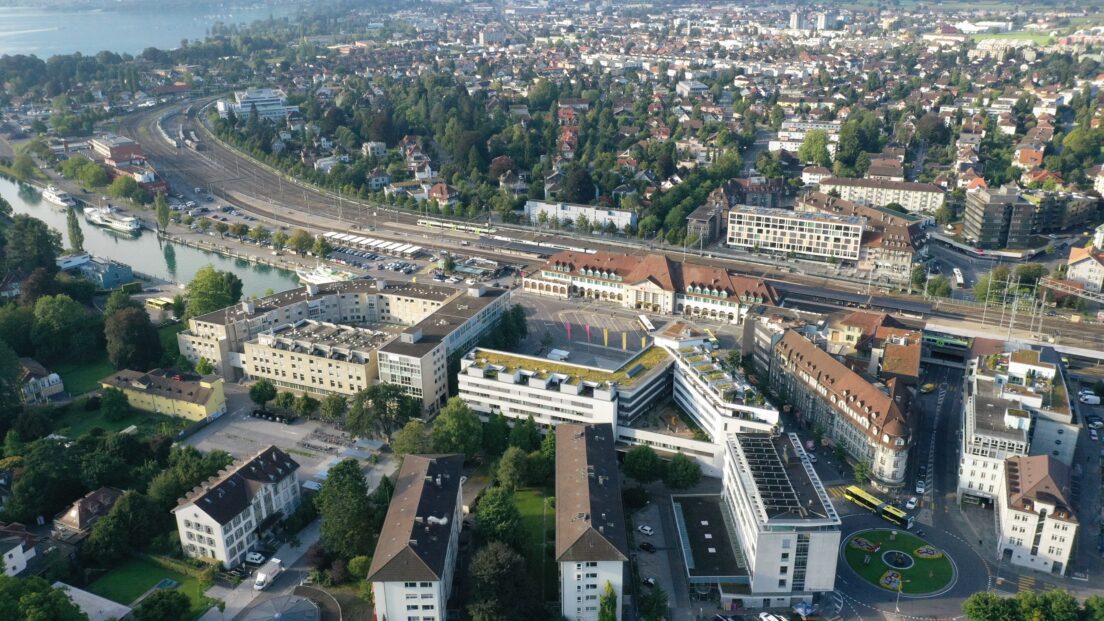Participatory planning as the basis for sustainable development

The ongoing development of the Thun railway station district calls for spatial and operational optimisation in order to improve mobility and quality of life. A participatory charrette process has provided key insights that now serve as the basis for the upcoming step-by-step implementation. While the planning process continues, the city has initiated initial measures to make the area more attractive, particularly through temporary projects.
The key area for urban development, the Thun railway station district, is at an important turning point. The vision of a dynamic mobility hub and a lively urban neighbourhood is making progress with the findings now available from the participatory charrette process. Mayor Raphael Lanz emphasises the importance of the open-ended and participatory process, which creates a solid basis for future planning steps.
The charrette process, in which visions and viable solutions were developed by three interdisciplinary teams, demonstrates the importance of involving various interest groups in the planning process. The broad participation enabled a comprehensive dialogue and the development of shared visions for the Thun railway station district.
One of the key findings is the need to make spatial and operational optimisations in order to create a future-oriented mobility hub that is suitable for the disabled. This also includes relieving Seestrasse and the Maulbeer roundabout of motorised individual traffic and incorporating the south side of the station for a new bus solution. In order to develop the area in a timely and sustainable manner, major upfront investments and interdependencies should be avoided as far as possible.
In addition, the development should take into account the existing identities and structures and build on optimised access and open spaces. The promotion of a location-appropriate and balanced mixed-use urban neighbourhood with a high degree of flexibility and the strengthening of public spaces are further key objectives. For example, Bahnhofplatz, the Schifflände and the riverside promenade are to be upgraded and further developed as important public spaces. Improved pedestrian and cycle connections, including new links such as a “panoramic bridge” crossing the Aare and a railway overpass, are also under discussion. Seestrasse is to become an attractive backbone for the neighbouring development area. This extends between the railway tracks and shipping canal as well as the River Aare. Over the next few years, the entire neighbourhood is to develop into a well-located, well-balanced area with a variety of focal points and space for innovative residential and working uses.
In parallel with the further planning, the city is tackling initial measures to make the area more attractive. One example of this is the temporary greening of Aarefeldplatz with “climate trees”, which has already been completed and not only helped to improve the quality of life over the summer months, but also emphasised the importance of green spaces in urban areas. With this “LeiStbild” and the final report from the charrette process, the city of Thun has a clear idea of how the area should be developed in the coming years. The synthesis of these findings is currently being incorporated into a masterplan and is expected to be finalised by the end of 2023. The masterplan will serve as a further guideline for the implementation of the project. Thanks to these coordinated efforts, the city of Thun is well on the way to realising its vision of a liveable and mobility-friendly urban district at Thun railway station.